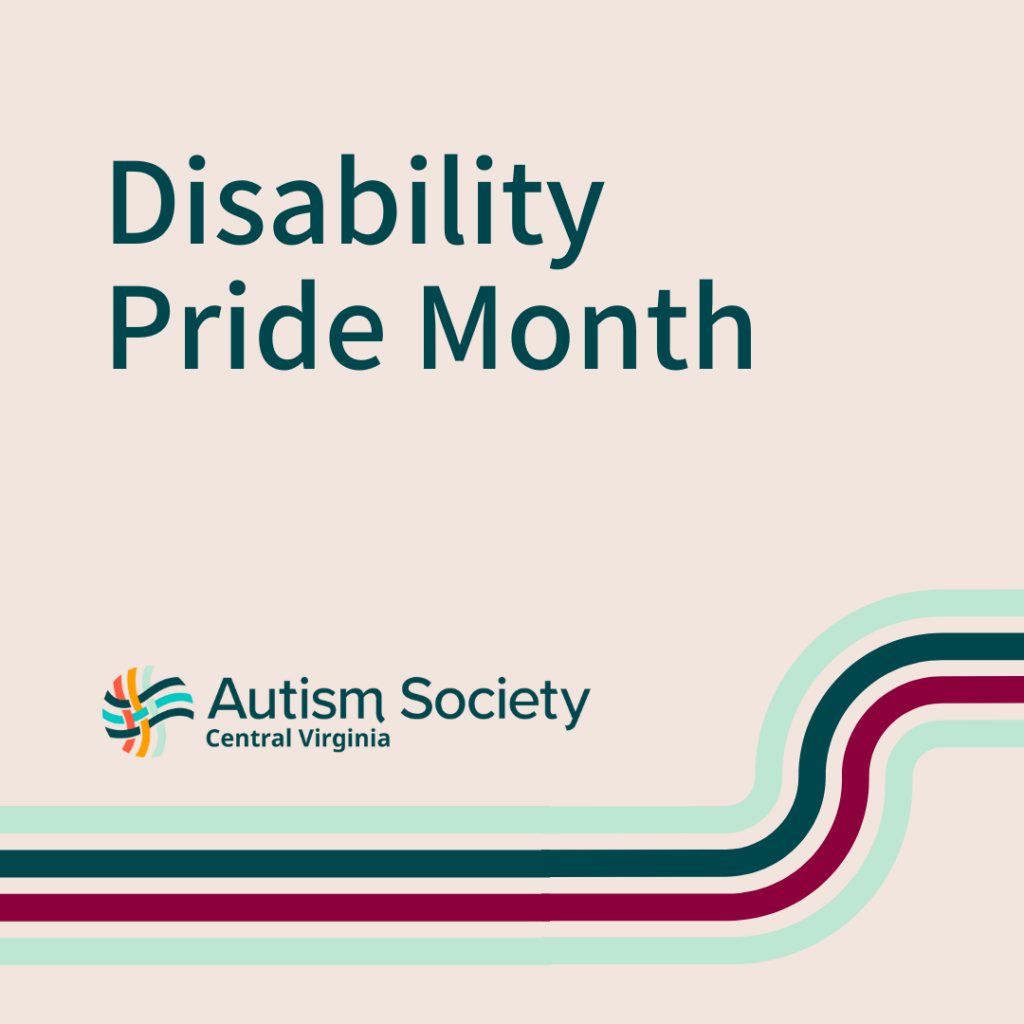What is Disability Pride Month?
Let’s Start at the Beginning.
Disability Pride began initially as a day of celebration in 1990 to honor the passing of the Americans with Disabilities Act (ADA).
The first official celebration of Disability Pride Month began on the 25th Anniversary of the ADA in July 2015. Disability Pride Month is not yet federally recognized, but many states (including Virginia), now recognize the holiday.
Since Then…
Cities across the U.S. have celebrated disability pride month each July with events, education, and other festivities. These events serve as a time for the disability community to come together, uplift, and amplify one another’s voices and be heard. In 2019, the Disability Pride Flag was designed by Ann Magill with the intention of encompassing all disabilities. In 2021, Magill revised the flag to incorporate feedback from community members, including insights from photosensitive community members to create a more accessible version of the flag.
Celebrating Disability Pride Month
Disability Pride Month celebrates disabled persons embracing their disabilities as integral parts of who they are, reclaiming visibility in public and interacting fully with their disabilities out in the open, and rejecting shame and internalized ableism. It is a time for the disability community to come together, uplift, and amplify one another’s voices and be heard.

What is the Disability Pride Flag?
History of the Disability Pride Flag
The Disability Pride Flag was designed originally in 2019 by Ann Magill with the intention of encompassing all disabilities. In 2021, Magill revised the flag to incorporate feedback from community members, including insights from photosensitive community members to create a more accessible version of the flag. The flag exists now in the public domain.
What Does the Disability Pride Flag Look Like?
The Disability Pride Flag consists of five diagonal stripes of different colors resting on a faded black background. The faded black background represents mourning and rage for victims of ableist violence and abuse, and the diagonal stripes represent the breaking of the walls and barriers that separate individuals in the disability community from society, as well as light and creativity cutting through the darkness.
What Does the Disability Pride Flag Represent?
Each stripe within the Disability Pride Flag represents a unique portion of the disability community. Red symbolizes physical disabilities.Gold symbolizes neurodivergence. White symbolizes indivisible and undiagnosable disabilities. Blue symbolizes psychiatric disabilities. Green symbolizes sensory disabilities.
View ASCV’s upcoming programs and events HERE.
Find an event in the community HERE.
Learn about volunteer opportunities with the ASCV HERE.

